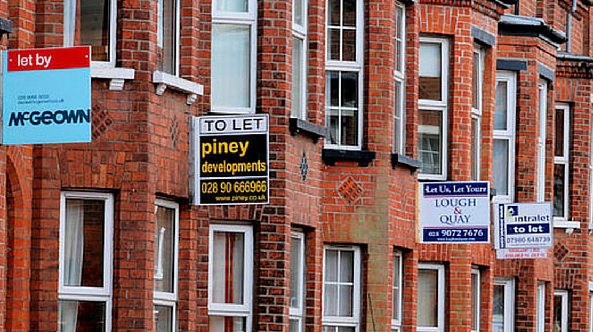Appetite in the UK property market continues to climb as transaction numbers creep upwards, but trends for house prices remain starkly different between regions of the UK.
The number of sales agreed in the UK housing market increased by 12% year-on-year according to Zoopla’s latest house price index. Meanwhile, house prices remained largely unchanged when looking at the country as a whole, sitting -0.2% down on last year’s figures.
There were a number of positives highlighted in Zoopla’s report which showed a market well and truly on the move, thanks to a better balance between homes for sale and buyers on the lookout compared with previous years recently. This has led to growth in the number of transactions, as well as viewings and interest.
Ultimately, the figures show a boost in confidence and an acceleration of momentum in the market, even taking into account the relatively unchanged house prices. Compared with March 2023, UK house prices are on average just £410 lower, and this far from offsets the significant price gains seen in the preceding two years.
South struggles while north thrives
Across the UK, there can be huge variations when it comes to house prices, from where they sit alongside the national average to how much movement they experience during varying economic cycles. At the moment, as Zoopla’s report highlights, there is a real divide between price inflation in the north and the south.
Five of England’s regions covering the south and the East Midlands have seen the most noticeable house price falls, while the regions of the north – the north west, north east and Yorkshire and the Humber – have all actually seen positive price inflation in recent months, outperforming the national average.
The West Midlands, Wales, Scotland and Northern Ireland have also followed these patterns, further polarising the south of England.
House prices impacted by mortgage costs
One of the main factors influencing these variations in market performance has been the rising mortgage rates of recent years. In places where homes are more expensive, this can shut a greater number of buyers out of the market completely, while also potentially putting people off upsizing or moving home. This has contributed to struggling house prices in these areas.
According to Zoopla, there has been a 50-70% increase in mortgage payments for a typical buyer over the past three years, but the largest monetary impact has been in the south of the country due to the higher house prices there.
The report writes: “The annual cost of mortgage repayments for an average priced home is more than £5,000 a year higher in 2024 than 2021 across the South West, South East, East of England.
“This rises to a high of an extra £7,500 in London. Across other regions and countries of the UK the increase is lower, ranging between £2,350 and £3,900 a year.
“While underlying household incomes will vary by area, this lower additional cost is one reason that market activity and prices are holding up better in more affordable markets with lower prices.”
North east and north west top for house prices
Property values in the north east and the north west continue to outperform the rest of England (when looking at these figures separate from the UK as a whole). Annually, prices in the north east increased by 1.3% between March last year and this year, while prices in the north west rose by 1.1%.
This was followed by Yorkshire and the Humber with a 0.8% increase, and the West Midlands with 0.5%.
In its outlook for the year, based on current conditions as well as expected changes within the wider economic environment, Zoopla notes: “We expect UK house prices to continue to firm over 2024 but we don’t expect house price inflation to start accelerating.
“The current trends in price inflation, and divergence between the south and the rest of the UK are expected to continue over the coming months.”
100,000 more people will move this year
Richard Donnell, executive director at Zoopla, said: “The rebound in sales being agreed continues for a fourth month as mortgage rates have fallen, consumer confidence improves and home buyers have much greater choice of homes for sale. The pipeline of sales is growing and we expect 100,000 more people to move home in 2024 than last year.
“There is clear evidence that house prices are firming and the pace of price falls is slowing. We don’t believe that prices will start to rise as buyers face much higher mortgage repayments than in the recent past.
“The market is adjusting to higher borrowing costs and what we need is continued price stability which will create the environment for continued growth in sales and home moves. It’s important sellers remain realistic on what they can achieve for their home. ”










